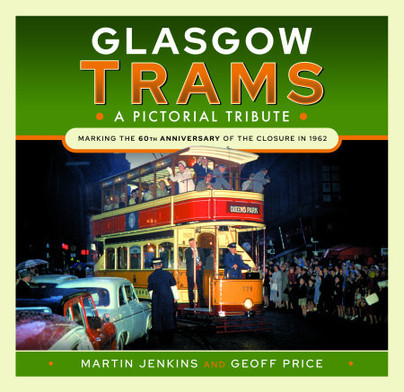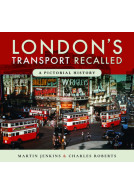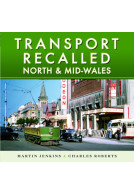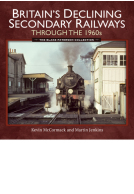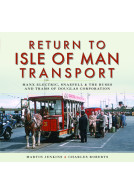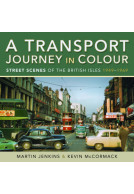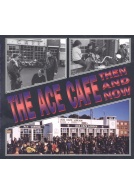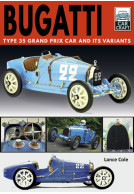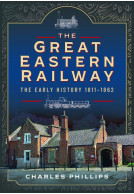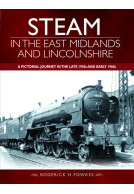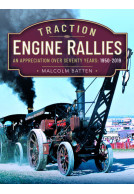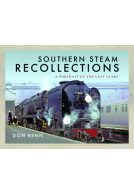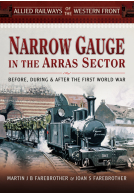Glasgow Trams (Hardback)
A Pictorial Tribute
Imprint: Pen & Sword Transport
Pages: 192
Illustrations: Over 600 colour & b&w illustrations & a series of network maps
ISBN: 9781526794383
Published: 1st July 2022
(click here for international delivery rates)
Need a currency converter? Check XE.com for live rates
This book has been commissioned to mark the 60th anniversary of the closure of Glasgow’s remarkable tram system, when over 250,000 people lined the city streets on 4 September 1962 to watch a final procession of some 20 trams representing different periods in the history of the undertaking. Using a wealth of previously unpublished photographs, the book shows as many areas and aspects of the city as possible. The trams are once again back where they belong, right in the heart of the city and its suburbs with people, period buses, cars and lorries, shops, churches, theatres, cinemas, parks, shipyards, factories and even steam and electric locos running on the tram tracks. Furthermore, the coverage goes way beyond the city boundary to encompass Airdrie, Coatbridge, Cambuslang, Rutherglen, Barrhead, Paisley, Renfrew, Clydebank and Milngavie. Over the years many locations have changed beyond recognition whilst others remain instantly recognisable. There are scores of photographs of the long-lasting Standards (some even in Glasgow’s legendary coloured route bands), trams acquired from Paisley including those cut down to single-deckers, Kilmarnock bogies, modern Coronations and Cunarders, ex-Liverpool cars, one-offs and also works cars. For those who still remember the trams, we hope you enjoy looking back as much as we have and for those who have no memory of wires and rails in the street, we hope this will recapture a lost way of life when services were frequent and fares relatively inexpensive.
Marking 60 years since the last Glasgow trams ran in 1962, this 192pp hardback book provides a photographic record of all parts of the Corporation’s tram network, as it stood in the 1940s right up to closure.
Model Rail Magazine
A useful selection of maps show how the network contracted over the decades, while a mix of black and white and colour images depict the various vehicle types during their working lives. As well as the trams, the images also feature plenty of incidental detail, showing buildings, street scenes, shop fronts and the prevailing fashions, all of which are essential reference for anyone building a layout set within the Glasgow area during this era.
The social history element of the images is also fascinating, with orderly queues of shipyard workers waiting for their transport home after gruelling shifts and bustling local high streets offering a glimpse into Glasgow’s past. As a bonus, the book includes a handful of striking images of heavy rail services sharing the tram lines, with small steam and electric shunting locomotives moving wagons along urban streets, servicing shipyards and goods depots. The exterior shots of railway station exteriors are also helpful for modellers.
Commemorating the sixtieth anniversary of the final closure of the much-loved and extensive tramway system in Glasgow, Pen & Sword’s latest tramway offering provides almost 200 pages of magnificent views of the varied tramcar types and routes over which they operated. Almost all of the images, both black and white and colour, appear to be unpublished previously, and while some may think it was a brave decision to include as many as four pictures to a page, in fact the quality of the original photographs and the care taken by the publisher and printer to ensure sharp reproduction means that the chosen layout is fully justified.
West Somerset Railway Association
The authors have chosen a clever and unusual format for the book whereby main developments on the tramway system from 1947 to 1962 are covered chronologically, while the photographs themselves are grouped around individual routes. The work of many good photographers is included, much of it now in the care of the Online Transport Archive, and the results are outstanding. Even the earliest colour views from 1949 and 1951 are of excellent quality.
Human interest is not overlooked either, including a page of images of workers of the Corporation Tramways Department which acts as a fitting tribute to staff, street scenes showing Glaswegians going about their daily business around the trams, and depot scenes featuring tramway enthusiasts and staff at work. A rather poignant double-page spread shows the aftermath of the serious fire at Dalmarnock depot in 1961 which destroyed 50 trams.
In their introduction, the authors explain that their objective was ‘to put the trams back where they belong on streets all over the city’, and in this they have certainly succeeded in fine style. This is a book which deserves to be on the shelves of every Glaswegian family to remind them of an important part of their transport heritage and social history, and which will also appeal to those who visited the city before the trams vanished in 1962.
"Allows a reader to study the visual highlights of the network at their leisure. There is much that can be studied. Now get the book!"
Journal of the Road Transport History Association - No110, December 2022
Many of the street scenes will induce a degree of nostalgia amongst older readers, especially those with a connection to the Glasgow area.
Ffestiniog Railway Magazine - Winter 22
Your reviewer found this book quite fascinating.
A remarkable compilation of tram photographs taken during the long run down of Glasgow’s once vast tramway system. In 1947 Glasgow had the largest tram network in the UK with 300 route miles, 11 depots and its own works at Coplawhill for repairing and building “caurs”. 1200 trams went on routes to Airdie, Milngavie, Elderslie, Dalmuir West and Clarkston.
York City & District Society of Model Engineers
Recommended for all tram lovers and those nostalgic for what Glasgow once was.
"This handsome and addictive book, marking the 60th anniversary of the abandonment of Glasgow's tramway, superbly meets its objectives."
Tramway Review, no. 272 (December 2022)
This beautifully produced book illustrates the decline of the Glasgow tram system between 1947 and 1962. The authors state that the purpose of the book is “to cover the abandonment programme in date order with photographic profiles”. The reduction in the scale of operation is shown by comparing the network maps for 1947 and 1961.
Glasgow and West of Scotland FHS
There are no chapters, contents list or index, but the structure of the book is by year each with a short description and profile of events. There is also additional commentary to be found in each section. For every year, there is often both a service (route number) and a section (part of a route) profile. The main contents are of course the photographs many of which are in colour. Each image is usually captioned with a tram identification number, a location, a date, a fuller description and a source attribution.
Most of the photographs are of trams in service on the track in a variety of locations but there are some in the depot in various states of repair. There is only one internal shot of the interior of a “caur” and it is on page 7 where some staff of the Glasgow Corporation are named. In fact, people do not appear in many of the photographs. One unusual image on page 66 is Elderslie depot clerk, Jim Caldwell, overseeing the transfer of takings from the “bullion car” to the bank in Paisley. This was in 1957!
On a more contemporary note, plans to close a line to Paisley were postponed owing to the impact of the Suez Crisis in 1956.
Finally, the gradual deterioration in the condition of both the trams and the track is apparent as the years go by and recorded in this enjoyable book.
Featured in
Tramways & Urban Transit - Light Rail Transit Association
Together with Martin Jenkins, this book has been created to commemorate 60 years since the closure, but outlines the system chronologically since 1947, covering each stage of closure, year by year, with a profile of the routes and areas concerned. As the publishers say, it goes beyond the city boundary, as did the trams, to show Airdrie, Coatbridge, Cambuslang, Rutherglen, Barrhead, Paisley, Renfrew, Clydebank and Milngavie.
Tramfare, September/October 2022
The back cover suggests that the book will be “useful to modellers”. It is useful in as much as there is such a huge number of photographs (it is a pictorial tribute after all), three or four to a page with a large number never previously published. The authors have commented that they have particularly tried to show the trams in a city setting, rather than standing empty at the termini. This they have certainly achieved showing Glasgow as it really was, or at least as I remember it. This is a good point, because although some districts of Glasgow are unchanged, many of the locations shown in this book are now unrecognisable.
This book looks back on what was definitely a harder time to live through, but one that with hindsight (and perhaps rose-tinted spectacles) was somehow a better one than what we presently have to contend with. I can highly recommend the book to tramway enthusiasts, but also those with memories of a lost Glasgow, who want to wallow in a bit of nostalgia.
Reviewer: John Prentice
As featured in the article: 'The days when city trams ruled the streets'
Evening Times (Glasgow)
This book is in the same format as two other books previously reviewed in the Wessex Review which were co-authored by Martin Jenkins, and just like those, this one is superb. It will be a ‘must’ for any enthusiast who actually witnessed the final years of Glasgow’s huge tram system, and for those who didn’t but have an interest in trams, transport and bygone streetscapes.
Andy Wood
The book was commissioned to mark the 60th anniversary of the closure of the system in 1962, and covers the years from 1947. Each year forms a chapter with a map showing the extent of the system in that year. Changes are recorded, which in the latter years are mostly route closures. In 1949 two extensions were opened, but that year marked the beginning of the end with some important sections converted to trolleybus operation. Unlike many pictorial books whose captions do little more than describe what can be seen in the picture, these captions add vital information to the story and usefully back up the sections of text.
In addition to descriptions of the routes and the types of cars which ran on them, we discover, for instance, that when the decision to close the whole system was made it was initially envisaged that trams would last into the 1970s. However, when the accountants worked out just how much money the network was losing the schedule of closures was reduced to five years. We can also piece together the fact that public petitions (to keep lines from closing) are ineffective, and we can wonder at what, over the years, seems to be an inordinate number of disastrous depot fires.
Glasgow had a very extensive tramway system with lines stretching out into open countryside and distant neighbouring towns. The photographs, mostly previously unpublished and many in colour, show the cars in grimy industrial and tenement quarters, city centre and in pleasant suburb – a truly comprehensive survey of a characterful and much-loved city, its tramway and the many types of vehicle which ran on it.
About Martin Jenkins
MARTIN JENKINS was born and educated on Merseyside and has had a lifelong interest in all forms of transport, most particularly Glasgow trams. Starting in the 1990s, he researched, directed and narrated over 100 best-selling, transport-related DVDs for Online Video. He was the first chairman of UK charity Online Transport Archive, and is still a trustee. For much of his professional life he was a drama director with the BBC and today still works as a freelance director, lecturer and performer. He has now authored or co-authored over 20 transport-related books.
About Geoff Price
GEOFF PRICE was born on Merseyside, with his life-long interest in trams beginning at 9 months of age (Llandudno). A published author, his varied working life has included advertising (agency and newspapers), property valuation and road passenger transport. He is a former parish councillor and primary school governor. He was captivated by Glasgow’s trams, belatedly, in 1961 and, as a former chairman of the Merseyside branch of the Tramway & Light Railway Society, developed their monthly meetings into successful gatherings for a wider audience interested in transport generally.







